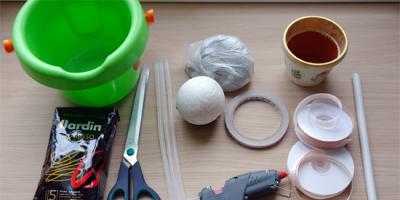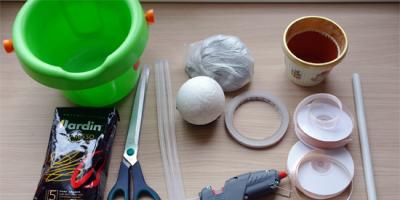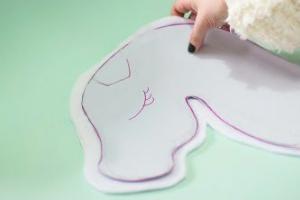In the summer, a person can be bitten by a bee, wasp, bumblebee, snake, and in some areas, a scorpion, tarantula or other poisonous insects. The wound from such bites is small and resembles a needle prick, but when bitten, poison penetrates through it, which, depending on its strength and quantity, either acts first on the area of the body around the bite, or immediately causes general poisoning.
Poisonous snake bites life-threatening. Usually snakes bite a person on the leg when he steps on them. Therefore, you should not walk barefoot in places where there are snakes. Snake bites are most dangerous when the venom enters a blood or lymphatic vessel. When poison is injected intradermally, intoxication increases within 1-4 hours. The toxicity of the poison depends on the type of snake. Cobra venom is the most dangerous for humans. Other things being equal, poisoning is more severe in children and women, as well as in people under the influence of alcohol.
Symptoms: burning pain at the site of the bite, two deep puncture wounds, redness, swelling, pinpoint hemorrhages under the skin, blisters with fluid, necrotic ulcers, dizziness, nausea, sweating, shortness of breath, tachycardia. After half an hour, the leg can almost double in volume. At the same time, signs of general poisoning appear: loss of strength, muscle weakness, dizziness, nausea, vomiting, shortness of breath, weak pulse, drop in blood pressure, fainting, collapse.
First aid:
§ a tourniquet must be applied above the bitten area or
twisting to prevent poison from entering other parts of the body (only for cobra bites for 30-40 minutes);
§ the bitten limb must be lowered and try to squeeze out the blood containing the poison from the wound;
§ immediately begin intensive suction of the poison from the wound with your mouth for 10-15 minutes (previously squeeze the fold of skin in the area of the bite and “open” the wounds) and spit out the contents; You can pull the blood along with the poison from the wound using a medical jar, glass or shot glass with thick edges. To do this, hold a lit splinter or cotton wool on a stick in a jar (glass or shot glass) for a few seconds and then quickly cover the wound with it;
§ ensure immobility of the affected limb (splint or fixing bandage); rest in a supine position during transportation to a medical facility; drinking plenty of water;
§ apply cold (ice pack) to the wound; wash the wound with a 10% solution of potassium permanganate, inject into the wound 0.5% adrenaline, diphenhydramine, 1 ml of 1% solution intramuscularly; 500-1000 units of specific serum intramuscularly, deliver the victim to a medical facility.
!You cannot suck blood from a wound with your mouth if there may be scratches or broken teeth in your mouth, through which the poison will penetrate into the blood of the person providing assistance.
! Do not make an incision at the site of the bite; provide alcohol in all forms.
Insect bites(bees, wasps, bumblebees) lead to the appearance of both local symptoms and signs of general poisoning, and can also cause an allergic reaction in the body. Their single bites do not pose any particular danger. If there is a sting left in the wound, it must be carefully removed, and a lotion of ammonia with water or a cold compress from a solution of potassium permanganate or just cold water should be applied to the wound.
Bites poisonous insects very dangerous. Their poison causes not only severe pain and burning at the site of the bite, but sometimes general poisoning. Symptoms resemble those of snake venom poisoning. In case of severe poisoning by spider venom karakurt Death may occur within 1-2 days.
Symptoms: limited local painful inflammatory reaction: burning sensation, pain, redness, swelling (especially when stung in the face and neck). There are no general toxic effects. Chills, nausea, dizziness, and dry mouth are mild. If general toxic phenomena are strongly expressed, this indicates an increased sensitivity of the body to insect poisons and the development of allergic reactions, which can cause death.
Urgent Care: quickly remove the bee sting and squeeze out the poison from the wound; put cold on the bite site; moisten, drip galazolin, alcohol, validol into the bite site; take antihistamines internally: diphenhydramine, suprastin, pipolfen; hot drink; if asthmatic syndrome develops, use a pocket inhaler; with the development of complete asphyxia - tracheotomy; call an ambulance.
A person gets sick from the bite of a rabid dog, cat, fox, wolf or other animal. rabies. The bite site usually bleeds slightly. If your arm or leg is bitten, you need to quickly lower it and try to squeeze the blood out of the wound. If there is bleeding, the blood should not be stopped for some time. After this, the bite site is washed with boiled water, a clean bandage is applied to the wound and the patient is immediately sent to a medical facility, where the victim is given special vaccinations that will save him from the deadly disease - rabies.
We bring to your attention a convenient reminder containing information on first aid measures in case of bites of various insects, snakes and animals. In the summer, these tips become especially relevant.
Insect bites (bees, wasps, bumblebees, hornets)
Stinging insect bites are usually quite painful and are accompanied by redness and swelling. The danger mostly lies in the possibility of developing an allergic reaction. In case of a bite you must:
- Check the affected area for the presence of an insect sting. It must be carefully removed from the wound with tweezers.
- Treat the affected area with a cotton swab moistened with a solution of hydrogen peroxide, ammonia, a light pink solution of potassium permanganate, or even plain water with salt (a teaspoon per glass).
- Apply cold (ice) to the bite site. It will relieve pain and swelling.
- The victim needs to drink plenty of fluids, and if he is predisposed to allergic reactions, he should take an antihistamine (suprastin, tavegil, claritin, etc.). If these measures do not stop the development of symptoms, you should immediately consult a doctor.
Tick bite
Ticks deserve special attention. Everyone knows that this small-looking insect is a carrier of very serious diseases.
- It is not recommended to remove a tick yourself; this can be done better by specialists in a medical facility. If you can’t turn to a professional for help, then stock up on tweezers and alcohol. You need to grab the tick as close to the victim’s skin as possible, and pull (do not pull!) perpendicular to its surface, slowly and carefully. If the insect's head does come off, do not rush to panic, but simply remove it like an ordinary splinter, treating the wound with alcohol or brilliant green. If you are afraid of infection, then save the tick in a vial and take it to the laboratory for analysis.
Snake bite
Snake poisoning is always life-threatening. If possible, then a person bitten by a snake (after first aid) must go to a medical institution, where he will be injected with a specific antidote serum. The bite of a non-venomous snake leaves two thin stripes on the body minor scratches, a poisonous reptile adds a puncture from fangs to the end of each of them. The first minutes after the injury, the victim does not feel severe pain, but after 10-15 minutes it begins to intensify, acquiring a burning character. It is very difficult to provide effective help on your own.
- A person bitten by a snake must be laid down, without giving him the opportunity to walk or move, so that the poison does not spread through the bloodstream throughout the body.
- Remember that panic and nervousness also speed up blood flow, so try to calm down.
- Wash the bitten area warm water with soap and apply a clean bandage.
- Not recommended: tight bandaging above the bite site and applying a splint. This is one of the most common methods of combating snake venom, but more and more experts are coming to the conclusion that it does more harm than good. Foreign researchers have found that applying a tourniquet significantly enhances local pathological processes in the body, up to and including gangrene of the entire limb. Sometimes it has to be amputated.
- Not recommended: Cauterize the bite site, make incisions. This causes excess blood loss, can provoke additional infection, and the wound does not heal for a long time after this.
- Not recommended: Suck out the poison. This method is not so much dangerous as it is not justified due to its low efficiency. It can be used, but only if a small child has been injured or the bite has been received from a large and very poisonous snake. In any case, you must act confidently and calmly, and there should be no scratches or other damage in your mouth (on your lips, mucous membranes of the oral cavity).
- Cold may also help the victim. If a person gets worse, some experts recommend inducing vomiting. A mandatory and urgent call to the doctor is required.
Animal bites (cats, dogs)
Most often, people suffer from dog bites, less often from cats, and even less often from wild animals in the wild or in a zoo. Such bites are dangerous for infection with rabies, toxoplasmosis and other diseases.
- It is necessary to wash the affected area running water to remove any remaining animal saliva from the wound.
- Treat the skin around the wound (not the wound itself!) with alcohol or tincture of iodine, then apply a clean bandage and take the victim to a doctor.
- Your doctor will decide whether to vaccinate against rabies. Of course, it will be very helpful if you find the owner of the animal that caused the bite, and he will provide you with information about the health and vaccinations of the offender. If the animal is homeless, then the victim in any case will have to endure more than one injection.
Remember - many bites can be avoided if you behave correctly. Never tease animals yourself and teach your children not to do this. It is especially important not to provoke aggression from snakes, which most often move out of a person’s path on their own, and attack only if they are disturbed or teased. Wear while walking through fields, forests or mountains high shoes. Do not touch animals belonging to other owners without permission, and do not allow children to do so. Even the most peaceful and good-natured dog can react inappropriately to a stranger, because it has its own character and mood. Do not provoke situations that could lead to a bite, so as not to blame others for this later. If a bite does occur, no matter who it was received from, never try to stop the bleeding - along with it, poison and other poisons are removed from the wound harmful substances that can cause infection.
Insect bites (bees and wasps) are accompanied by a local reaction of the body, and with increased sensitivity to bee venom, even one or more stings can cause a severe allergic reaction such as anaphylactic shock.
Symptoms: severe pain at the site of the bite; first paleness of the skin, then redness and swelling at the site of the bite; with increased sensitivity to bee (wasp) venom, anaphylactic shock may develop (headache, nausea, vomiting, asthmatic symptoms, tachycardia, decreased blood pressure).
First aid
1. Remove the bee (wasp) sting. Treat the bite site with alcohol.
2. Apply cold to the affected area. Provide plenty of fluids.
3. Give suprastin (fenkarol) orally, and analgin if necessary.
NOTE. In case of numerous bee (wasp) stings or the development of anaphylactic shock, immediately call emergency medical help.
Prevention: To protect residential premises, windows should be covered with nets, doors should be closed tightly, and, if necessary, chemically active agents (insecticides) should be used.
For poisonous snake bites snake venom enters the bloodstream and affects nervous system and can cause death from paralysis of the respiratory center. Snakes are the first to attack people, as a rule, when they are disturbed (touched, stepped on). The consequences depend on the type of snake, time of year, age and, especially, the location of the bite. A bite to the head and neck is much more severe than to a limb.
Symptoms: pain, burning sensation, hyperemia, increasing swelling at the site of the bite; dizziness, headache; muscle weakness, drowsiness; nausea, vomiting; increased heart rate, decreased blood pressure; in severe cases – convulsions, loss of consciousness; depression and then cessation of respiratory and cardiac activity.
First aid
1. Provide the victim with complete rest in a horizontal position.
2. Treat the bite site alcohol tincture iodine and apply a bandage.
3. Immobilize the limb with a splint or improvised means.
4. Put cold on the bite site. Provide plenty of fluids to the victim.
6. Call emergency medical help immediately.
NOTE. You should not make incisions (cauterize) the bite site, suck out the poison with your mouth, or apply a tourniquet.
Prevention: it is necessary to take precautions when being in the forest, having previously examined the resting place; When picking mushrooms and berries, your feet and hands should be protected as much as possible with shoes and clothing.
28. Features of the structure and functions of the digestive organs in children.
Oral cavity in newborns and children early age relatively small. Chewing muscles well developed language relatively large sizes, but short and wide.
Salivary glands in a newborn and a child in the first 3–4 months of life are not sufficiently differentiated. Therefore, little saliva is secreted, which causes dryness of the oral mucosa. At 3–4 months of life, the salivary glands become fully developed, and at this age children experience constant drooling, this is explained by the fact that a sufficient amount of saliva is secreted, and the ability to swallow it has not yet been fully developed.
Esophagus in young children it is relatively longer than in adults and has a funnel shape. Mucous membrane its tender, rich in blood vessels, dry due to the fact that mucous glands almost absent. Stomach located in the left hypochondrium and its only exit - the pylorus - is near the midline. Until 1 year of age, the position of the stomach is horizontal; after 1 year, when the child begins to walk, the stomach takes on a more vertical position. Mucous membrane the stomach is relatively thicker than that of an adult. Stomach capacity in a full-term newborn it is 30–35 ml, at the age of 3 months – 100 ml, at 1 year – 250 ml. Secretory glands secrete gastric juice containing all the enzymes as in an adult, but with less activity.
Gastric juice a child has the same composition as an adult, i.e. it contains hydrochloric acid and enzymes.
Intestines infant relatively longer than that of an adult. Length the intestinal tract in an infant is 6 times the length of the body (in an adult it is 4 times). Mucous membrane The intestine is highly developed, abundantly supplied with blood vessels, rich in cellular elements, tender, with a large number of lymph nodes and villi. At the same time, underdeveloped submucosal tissue, muscles, transverse folds and imperfect in structure nerve plexuses. All this taken together causes slight vulnerability of the gastrointestinal tract.
Distinctive and important feature intestines of an infant is the increased permeability of its walls.
Colon is the main organ of absorption of iron, phosphorus, alkalis, water, sugar, chlorides, acids and some medicines. The duration of intestinal digestion during artificial feeding is about 2 days.
Liver in newborns and infants it is a relatively large organ. Its weight in newborns is 4% of the body weight (in an adult 2%). The child’s liver is very rich in blood vessels, there are few connective tissue elements in it, and its lobules are not clearly defined. The functional activity of the liver is diverse, but in young children it is insufficient.
1. Animal bites.
If the victim was bitten by a healthy domestic dog or cat and the wound is small, then it is washed and a sterile bandage is applied. Extensive wounds are packed with sterile wipes.
If bites are received from an unknown dog or cat or other animal, it is necessary to contact a medical institution, because the bite of rabid animals poses a great danger to life .
2. Snake bites.
According to the mechanism of action, snake venoms are divided into three groups:
- poisons that clot the blood, causing local swelling and tissue death(poisons of the copperhead, common viper, viper, etc.);
- poisons acting on the nervous system, causing muscle paralysis, respiratory depression and cardiac activity(poisons of sea snakes of tropical waters, cobras, etc.);
- poisons that simultaneously act on blood clotting and the nervous system, causing local swelling and tissue death(poisons of Australian adders, rattlesnakes).
When bitten by a cobra or other snakes of this group, pain occurs, a feeling of numbness in the bite area, spreading to the entire limb and body. The victim experiences dizziness, fainting, pain, a feeling of numbness in the face and tongue, and swallowing is impaired. Ascending paralysis develops rapidly, starting with lower limbs(unsteady gait, impossible to stand on your feet, and then complete paralysis).
The rhythm of the heart is disrupted. If the poison enters the blood vessels, then death occurs within 15–20 minutes.
When bitten by snakes of the viper family, deep puncture wounds, redness and swelling are visible at the site of the bite, the skin becomes shiny, becomes purple-bluish, and blisters and ulcers may form. Excitement is typical, followed by weakness, dizziness, nausea and vomiting, and shock may develop.
When providing first aid from the very beginning it is necessary to ensure the peace of the victim. Can intensively suck out the poison with your mouth (if there is no wound in the mouth). This can be done by the victim himself or by a stranger. Duration of suction – 10-15 minutes with constant spitting of the contents.
Cauterization of the wound is unacceptable.
Application of a tourniquet is permissible only in case of a cobra bite, but for no more than 30–40 minutes.
3. Insect bites.
Multiple bee and wasp stings can pose a danger to humans, and even more so to a child.
Tissue swelling occurs, the temperature rises, a sharp headache appears, and convulsions are possible.
When providing first aid It is necessary to apply a cold compress to the bite site, give a glass of sweet tea, 1 gram of acetylsalicylic acid, a diphenhydramine tablet to drink, then consult a doctor.
In the summer, a person can be bitten by a bee, wasp, bumblebee, snake, or other poisonous insects. The wound from such bites is small and resembles a needle prick, but poison penetrates through it, which, depending on its strength and quantity, either acts first on the area of the body around the bite, or immediately causes general poisoning.
Poisonous snake bites
Poisonous snake bites are life-threatening. Usually snakes bite a person's leg when he steps on them. Therefore, you should not walk barefoot in places where there are snakes. Snake bites are most dangerous when the venom enters a blood or lymphatic vessel. When poison enters the skin, intoxication increases over 1-4 hours. The toxicity of the poison depends on the type of snake. Cobra venom is the most dangerous for humans. Other things being equal, poisoning is more severe in children and women, as well as in people under the influence of alcohol.
Symptoms of a poisonous snake bite: burning pain at the site of injury, two deep puncture wounds, redness, swelling, pinpoint hemorrhages under the skin, blisters with fluid, necrotic ulcers, dizziness, nausea, sweating, shortness of breath, tachycardia. After half an hour, the leg can almost double in volume. At the same time, signs of general poisoning appear: loss of strength, muscle weakness, dizziness, nausea, vomiting, shortness of breath, weak pulse, drop in blood pressure, fainting, collapse.
First aid for poisonous snake bites:
- It is necessary to apply a tourniquet or twist above the bitten area to prevent the poison from entering other parts of the body (only for cobra bites for 30-40 minutes);
- the bitten limb must be lowered and try to squeeze out the blood containing the poison from the wound;
- immediately begin intensive suction of the poison from the wound with your mouth for 10-15 minutes (previously squeeze the fold of skin in the area of the bite and “open” the wound) and spit out the contents; You can pull the blood along with the poison from the wound using a medical jar, glass or shot glass with thick edges. To do this, hold a lit splinter or cotton wool on a stick in a jar (glass or shot glass) for a few seconds and then quickly cover the wound with it;
- ensure immobility of the affected limb (splint or fixing bandage); rest in a supine position during transportation to a medical facility; drinking plenty of water;
- apply cold (ice pack) to the wound; wash the wound with a 10% solution of potassium permanganate, inject into the wound 0.5% adrenaline, diphenhydramine, 1 ml of 1% solution intramuscularly; 500-1000 units of specific serum intramuscularly, deliver the victim to a medical facility.
Important! You should not suck blood from a wound with your mouth if there may be scratches or broken teeth in the mouth, through which the poison will penetrate into the blood of the person providing assistance. You should not make an incision at the site of the bite, or give alcohol in any form.
Bites of various poisonous insects.
Insect bites (bees, wasps, bumblebees) lead to the appearance of both local symptoms and signs of general poisoning, and can also cause an allergic reaction in the body. Their single bites do not pose any particular danger. If there is a sting left in the wound, it must be carefully removed and a lotion of ammonia with water or a cold compress from a solution of potassium permanganate or just cold water.
Poisonous insect bites are very dangerous. Their venom causes not only severe pain and burning at the site of the bite, but sometimes general poisoning. Symptoms resemble those of snake venom poisoning. In case of severe poisoning by spider venom karakurt Death may occur within 1-2 days.
Symptoms: limited local painful inflammatory reaction: burning sensation, pain, redness, swelling (especially when stung in the face and neck). There are no general toxic effects. Mild: chills, nausea, dizziness, dry mouth. If general toxic phenomena are strongly expressed, this indicates an increased sensitivity of the body to insect poisons and the development of allergic reactions, which can cause death.
First aid for insect bites:
- quickly remove the bee sting and squeeze out the poison from the wound;
- put cold on the affected area;
- moisten, drip galazolin, alcohol, validol into the bite site;
- take antihistamines internally: diphenhydramine, suprastin, pipolfen;
- hot drink;
- if asthmatic syndrome develops, use a pocket inhaler;
- with the development of complete asphyxia - tracheotomy;
- call an ambulance.
Animal bites and first aid for them.
A person gets rabies from the bite of a rabid dog, cat, fox, wolf or other animal. The bite site usually bleeds slightly. If your arm or leg is bitten, you need to quickly lower it and try to squeeze the blood out of the wound.
Help with a rabid animal bite:
If there is bleeding, the blood should not be stopped for some time. After this, the bite site is washed with boiled water, a clean bandage is applied to the wound and the patient is immediately sent to a medical facility, where the victim is given special vaccinations that will save him from the deadly disease - rabies.
It should also be remembered that you can get rabies not only from the bite of a rabid animal, but also in cases where its saliva gets on scratched skin or mucous membrane.
First aid for a tick bite
A visit to the forest requires preliminary preparation. It is necessary to attend to preventive vaccination in the fall. The first vaccination is done in October-November, the second one in March-April. This measure allows you to minimize the risk of tick-borne encephalitis.
However, vaccination does not prevent tick bites. Therefore, you need to know how to properly provide first aid for a tick bite. If there is such a possibility, then after discovering the attached insect, it is necessary to go to an ambulance station. Specialists will carefully remove the tick and tell you where to take it for analysis. If this is not possible, then first aid for a tick bite is provided on your own.
To do this you need to take the following steps:
To eliminate the risk of infection with tick-borne encephalitis, it is recommended to submit ticks to special laboratories. If a dangerous pathogen is detected, a prophylactic course of taking specific interferons is prescribed. They do not guarantee the absence of symptoms of encephalitis, but they make the course of the disease easier.








